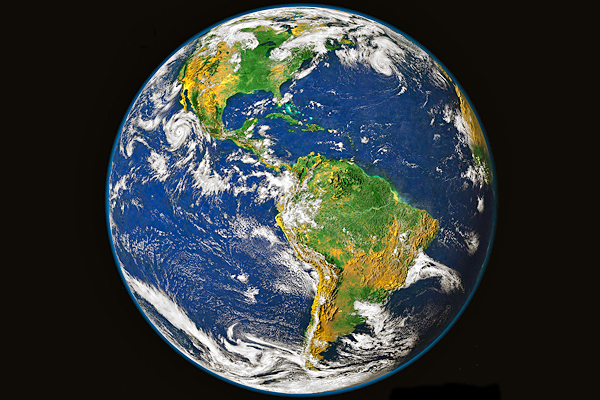
Temperature extremes
Study finds that extreme temperature anomalies are warming faster than Earth's average
11:10 a.m., Dec. 15, 2014--University of Delaware alumnus Scott M. Robeson and geography professor emeritus Cort J. Willmott are co-authors of a study that found spatial patterns of extreme temperature anomalies — readings well above or below the mean — are warming faster than the overall average.
The study findings appeared online this week in the journal Geophysical Research Letters in a paper titled “Trends in Hemispheric Warm and Cold Anomalies.”
Research Stories
Chronic wounds
Prof. Heck's legacy
While it is widely known that the Earth’s average temperature has been rising, Robeson, now a geography professor at Indiana University, Bloomington, explained that trends in extreme heat and cold have an outsized impact on water supplies, agricultural productivity and other factors related to human health and well-being.
“Average temperatures don’t tell us everything we need to know about climate change. Arguably, these cold extremes and warm extremes are the most important factors for human society,” said Robeson, who earned his bachelor’s degree in geography and doctoral degree in climatology at UD in 1984 and 1992, respectively.
Other co-authors on the paper include Phil D. Jones from the University of East Anglia.
The researchers analyzed temperature records for the years 1881 to 2013 from HadCRUT4, a widely used data set for land and sea locations compiled by the University of East Anglia and the United Kingdom Met Office.
Using monthly average temperatures at points across the globe, the researchers sorted them into “spatial percentiles,” which represent how unusual they are by their geographic size.
Key study findings include:
- Temperatures at the cold and warm extremes, or “tails,” of the spatial distribution — namely the fifth and 95th percentiles — increased more than the overall average Earth temperature.
- Over the 130-year record, cold anomalies increased more than warm anomalies, resulting in an overall narrowing of the ranges of Earth’s temperatures.
- In the past 30 years, however, that pattern reversed, with warm anomalies increasing faster than cold anomalies.
According to Willmott, an expert in developing statistical methods to analyze large area data sets, the paper is innovative because it represents a fusion of interesting statistical methods and global data sets.
“We’ve taken data that are relatively recent and applied a new methodology to arrive at a better description of the temperature changes over a long period of time,” said Willmott, who retired in 2013 from UD’s geography department, which is housed in the College of Earth, Ocean, and Environment.
The study records separate results for the Northern and Southern hemispheres. Greater volatility found in Northern Hemisphere temperatures was as expected, the researchers said, since there is considerably less land mass in the South to add complexity to the weather systems.
The study also examined anomalies during the “pause” in global warming that scientists have observed since 1998. The researchers found that warming during the last 16-year period continued at most locations on the planet and during much of the year; however, they resisted drawing conclusions about trends from such a short period of record.
“There really hasn’t been a pause in global warming, there has been a pause in Northern Hemisphere winter warming,” said Robeson, adding that warming was offset by strong cooling during winter months in the Northern Hemisphere.
It may seem counterintuitive that global warming would be accompanied by colder winter weather at some locales. But Robeson said the observation aligns with theories about climate change, which hold that amplified warming in the Arctic region produces changes in the jet stream that can result in extended periods of cold weather at some locations in the mid-northern latitudes.
And while the rate of planetary warming has slowed since 1998, it hasn’t stopped. The World Meteorological Organization announced this month that 2014 is on track to be one of the warmest, if not the warmest, years on record as measured by global average temperatures.
Adapted with permission from Indiana University
Image courtesy of NASA Goddard Space Flight Center








